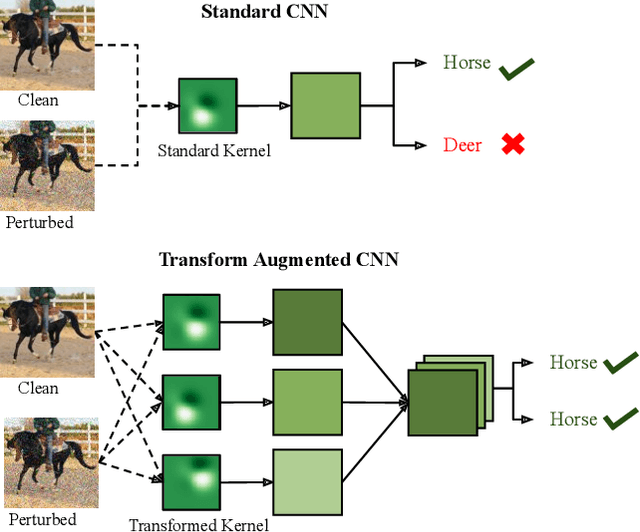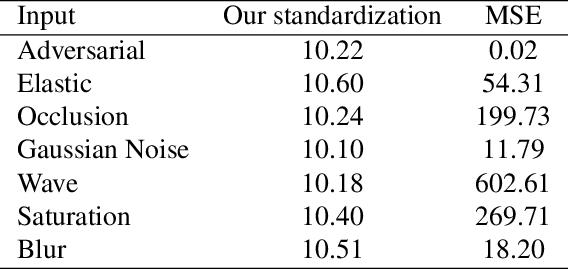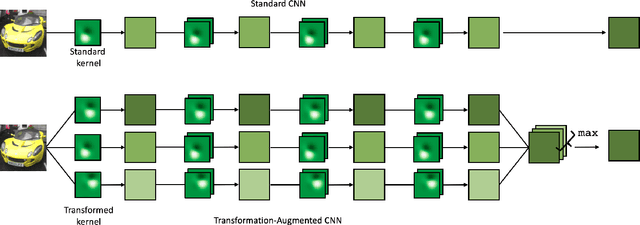Wiggling Weights to Improve the Robustness of Classifiers
Paper and Code
Nov 18, 2021



Robustness against unwanted perturbations is an important aspect of deploying neural network classifiers in the real world. Common natural perturbations include noise, saturation, occlusion, viewpoint changes, and blur deformations. All of them can be modelled by the newly proposed transform-augmented convolutional networks. While many approaches for robustness train the network by providing augmented data to the network, we aim to integrate perturbations in the network architecture to achieve improved and more general robustness. To demonstrate that wiggling the weights consistently improves classification, we choose a standard network and modify it to a transform-augmented network. On perturbed CIFAR-10 images, the modified network delivers a better performance than the original network. For the much smaller STL-10 dataset, in addition to delivering better general robustness, wiggling even improves the classification of unperturbed, clean images substantially. We conclude that wiggled transform-augmented networks acquire good robustness even for perturbations not seen during training.
 Add to Chrome
Add to Chrome Add to Firefox
Add to Firefox Add to Edge
Add to Edge